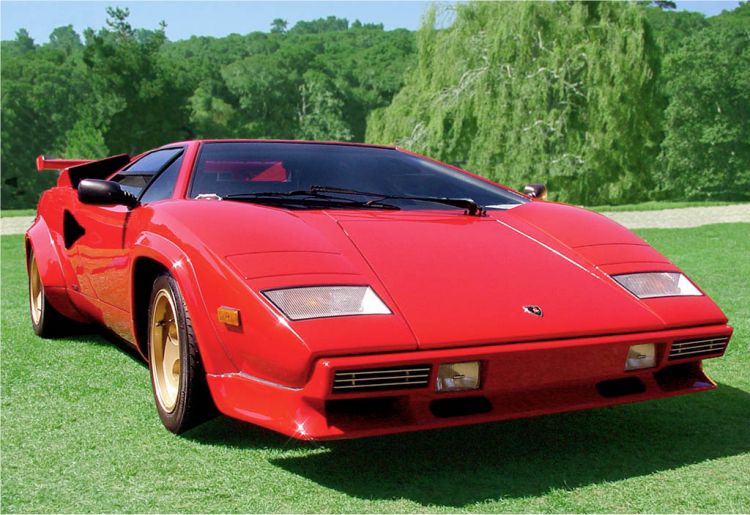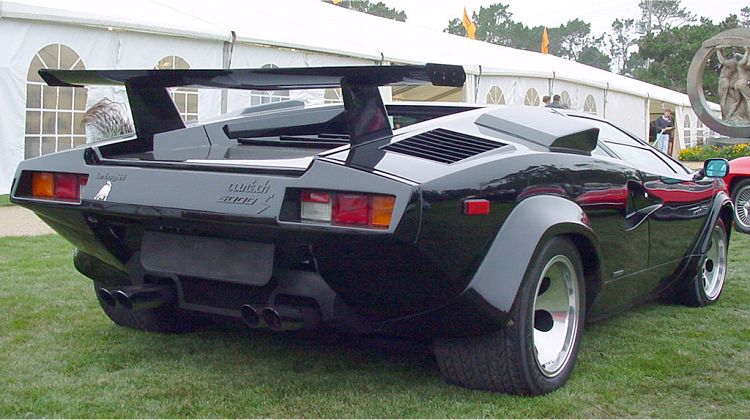Description
The Lamborghini Countach LP 500 S, unveiled in 1982, was the next evolutionary step in the legendary Countach story—a car that brought more power, refinement, and presence to one of the most dramatic supercars ever built. It was the model that carried Lamborghini’s flagship into the 1980s, blending the aggressive looks of the earlier LP 400 S with a larger, more potent V12 engine and a degree of mechanical maturity that made it faster, more flexible, and more robust. The LP 500 S marked the point at which the Countach evolved from an extreme design experiment into a fully realized grand touring supercar, capable of dominating both the road and the imagination.
By the early 1980s, Lamborghini was emerging from a turbulent period of financial difficulty. Under the new ownership of the Swiss-based Mimran brothers, the company sought to revitalize its model range. The Countach had already achieved global fame as the poster car of its era, but its performance had fallen slightly behind the rapidly advancing competition. The answer was to update and enlarge its V12 engine, while retaining the unmistakable design that had become its identity. The result was the Countach LP 500 S—an evolution that reinforced Lamborghini’s reputation for producing machines that were both outrageous and exceptional.
The LP 500 S (sometimes referred to as the LP 5000 S in certain markets) took its name from its larger 4,754 cc V12 engine, up from the 3.9 litres of the LP 400 S. The new engine featured four overhead camshafts, six twin-choke Weber carburetors, and an increased compression ratio. Power output rose to 375 horsepower at 7,000 rpm, with torque climbing to 418 Nm at 4,500 rpm. The result was stronger mid-range acceleration and greater flexibility in everyday driving, without sacrificing the car’s top-end performance. Mated to a five-speed manual gearbox and driving the rear wheels, the LP 500 S could sprint from 0 to 100 km/h (62 mph) in 5.6 seconds and reach a top speed of 295 km/h (183 mph).
The chassis remained the same tubular steel spaceframe design as in previous Countach models, but with refinements to the suspension geometry and improved high-speed stability. The car continued to use fully independent suspension with unequal-length wishbones, coil springs, and telescopic dampers. Braking was handled by ventilated discs all around, while the steering remained unassisted, delivering pure mechanical feedback. The combination of a wider track, larger Pirelli P7 tyres, and the now-iconic wedge-shaped body gave the LP 500 S a commanding stance—low, wide, and unmistakably aggressive.
Marcello Gandini’s timeless design for Bertone was left largely intact, but subtle updates distinguished the LP 500 S from its predecessor. The wheel arches and front spoiler were slightly reshaped for improved aerodynamics, and the interior gained new materials and options. Many cars were fitted with the optional rear wing, an enormous inverted aerofoil that, while adding downforce, became more a symbol of power and excess than a functional necessity. The car’s visual drama was unparalleled—every surface sharp, every angle deliberate, as if the entire car had been carved from a single block of precision and intent.
Inside, the Countach LP 500 S reflected a gradual shift toward greater comfort and luxury. The seats were wider and more supportive, trimmed in premium leather, and the dashboard received new switchgear and improved ventilation. The overall layout remained driver-centric, with a short-throw gear lever, deep-set instruments, and minimal distractions. Visibility remained as limited as ever—especially to the rear—but the car’s aura of purpose made that almost irrelevant. Sitting in the cockpit of a Countach was less about practicality and more about theatre; every journey felt like an event.
Driving the LP 500 S was a visceral experience. The enlarged V12 delivered a deeper, more resonant exhaust note, and the added torque made the car more tractable at low speeds than its predecessors. It was still a physical car to drive—heavy steering, firm clutch, and a gearbox that demanded precision—but it rewarded effort with astonishing performance and feedback. At speed, the Countach felt planted and stable, its wide stance and aerodynamic shape giving it the ability to devour long stretches of road with ease. It remained demanding, but that challenge was part of its allure—the Countach never compromised its raw, mechanical character.
Between 1982 and 1985, approximately 321 examples of the LP 500 S were produced, making it one of the rarer Countach variants. Each car was hand-built at Lamborghini’s Sant’Agata Bolognese factory, with numerous minor differences between individual examples. Many were finished in the bold, expressive colours of the 1980s—Rosso Siviglia, Nero Tenebre, Bianco Polo, and Giallo Fly—often paired with contrasting leather interiors that enhanced the car’s flamboyant personality.
The LP 500 S represented a crucial stage in the Countach’s evolution. It retained the purity of Gandini’s original design but added maturity, refinement, and real-world usability. It was the car that kept Lamborghini competitive through a challenging period and paved the way for the later LP 5000 Quattrovalvole, which would take the Countach to its final, most powerful form.
Today, the Lamborghini Countach LP 500 S stands as one of the most desirable and collectible variants of the series. It perfectly captures the Countach’s dual nature: brutal and beautiful, impractical yet irresistible. With its larger V12, unmistakable lines, and commanding presence, it remains one of the most evocative expressions of Lamborghini’s philosophy—daring, unconventional, and utterly unforgettable. It was not just a car, but an experience—a rolling sculpture that embodied the purest form of automotive passion.

